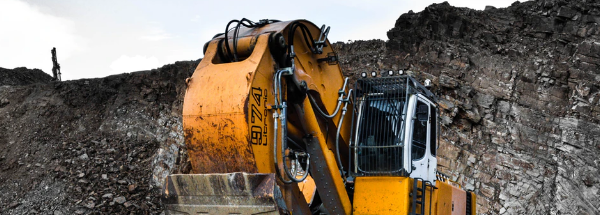Whether we realise it or not, health and safety plays an important role in every aspect of our day to day lives. From everyday household items to our daily commute and the places we visit, health and safety guidelines are often put in place to protect millions of people from harm.
However, one of the most impactful ways that health and safety affects us is in the workplace. It doesn’t matter what industry or sector you find yourself in – from office spaces to construction sites, every single workspace comes with its own risks and hazards.
Today, millions of workers across the UK encounter threats to their wellbeing as part of their work duties every day. As a result, health and safety training forms an important part of compliance culture.
What is health and safety?
Before we dive into the ins and outs of health and safety training, it’s good to take a brief look at what workplace health and safety is in more detail.
In general, health and safety is about preventing people getting harmed as they go about their day to day lives. The primary goal of health and safety laws, regulations and policies is to create a safe and secure working environment, and to reduce the risk of accidents, injuries and fatalities.
Workplace health and safety refers specifically to key measures that are put in place to ensure that a workspace is a safe and secure environment. While this may sound simple in principle, putting it into practice is a task that requires a great deal of planning and assessment to put in to practice. To cultivate a safe workplace, employers must take into consideration a wide variety of factors, possible actions and potential situations. For employees, this can include their work duties, the equipment they use, the things they come into contact with, the suitability of their workspace and the amenities they have access to.
Since the onset of the industrial revolution, health and safety regulations have formed a vital foundation in UK law that all industries and sectors are beholden to. This ensures that all individuals, no matter what their job may be, have the right to work in an environment that is safe and protects them from harm.
It’s also important to remember that workplace health safety isn’t just confined to the rights and needs of employees – it affects anyone who may come into close contact with or has access to areas where work is conducted. This can include stakeholders, visitors or even the general public, if work is undertaken in public spaces.
As an employer, or a self-employed individual, you are responsible for health and safety in your business. You must take the right precautions to control the risks of workplace dangers that can affect yourself, your employees and anyone else who could be affected. And you must do this while complying with health and safety legislation.
What should health and safety training cover?
At its most basic level, health and safety training should provide employees with relevant, comprehensive information that reflects the risks that exist within the workplace.
Training should cover:
- Key safety and health policies, procedures and guidelines
- How to identify and manage risk in the workplace
- Measures to be taken in an emergency
- The effects of specific hazards that employees may encounter as part of their work duties
- Safe procedures for the use of relevant machinery and equipment relevant to the employee’s role
- How to report hazards, concerns, incidents and injuries
- How to have input in safe work practices and procedures
Employers should conduct a Training Needs Analysis (TNA) to identify gaps in employee training and related training needs.
- Is the correct level of training being delivered to the right employees?
- Do your employees understand what is required of them?
- Does the training provide them with the knowledge and skills they need to work safely and without risk?
- Are they able to work as they have been trained to?
- Is the most suitable training method being used?
Assessing the effectiveness of a training program should always be an ongoing process. Training should be regularly reviewed and updated to ensure it complies with current legislation, industry best practice and risks that can evolve within the workplace.
- What kind of feedback are you getting from line managers and users about the training?
- Is any further information and/or training needed to strengthen the compliance process?
- Has there been any improvement in your organisation’s health and safety performance?
- What improvements can be made?
- Is there a positive return on investment (ROI)?
The best way to be sure that you are managing risks effectively, and meet the requirements of relevant legislation is to create a robust health and safety programme, which covers all the stages of policy, planning, operations, monitoring, review and audit that is necessary. This system has to be brought alive through engagement with the workforce – through training, information, instruction and supervision to ensure it is held and followed to a high standard. These actions broadly fall into 2 categories:
Proactive Activities
Proactive activities (often called leading indicators) are activities that organisations can put in place to identify, eliminate or minimise risks before they can escalate and cause harm. Proactive safety measures can include:
- Training
- Audits
- Inspections
- Interviews
- Monitoring workplace performance
- Monitoring workplace behaviour
There are many benefits to incorporating proactive activities into a health and safety programme. They can prevent workplace illness, accidents and injuries from developing in both the long and short term, and help organisations to establish a positive safety culture across the workforce. Embedding an appreciation for safety and ensuring an on-going commitment can help organisations keep employees and stakeholders safe, and can even have additional benefits, such as significantly increase productivity, efficiency and workplace morale.
Taking a proactive approach to health and safety requires a great deal of investment of finances and human resources. While measures such as training and regular auditing might seem expensive in the short term, the upfront costs pale in comparison to the fines, surcharges and compensation that can be incurred as a result of failures in health and safety.
Reactive activities
Reactive activities (also called lagging indicators) refer to actions taken to deal with accidents and incidents after they occur. Reactive safety measures can include:
- Accident reporting
- Accident investigation
- Incident investigation
- Regular ill-health and sickness reviews
- Identifying common trends
While proactive health and safety management aims to prevent accidents and incidents, reactive measures need to be in place in case the preventative measures fail. Employees need to be trained so they know how to respond to accidents and incidents, and how to capture information to improve health and safety practices in the future.
What is health and safety training?
Health and safety training should provide people with the information they need to identify and eliminate or manage risk in the workplace. It is a legal responsibility of employers to provide appropriate training, and good training demonstrates a commitment to health and safety.
Some training topics are common across all workplaces – for example, everyone needs to know what to do in case a fire breaks out. Other topics are workplace-specific, for example working at height, noise or legionella.
What are the key laws and regulations that impact health and safety training?
The Health and Safety at Work Act 1974 (alternately referred to as the HSWA, HASAWA or HSW Act) outlines the general responsibilities that employers and employees have to ensure health and safety in the workplace.
The introduction of the HSWA led to the founding of the Health and Safety Executive (HSE), a non-departmental public body that has the authority to investigate, assess and prosecute health and safety violations. It also conducts research and advises industries on health and safety concerns.
The Act also outlines the investigative powers that inspectors possess, and prosecution guidelines and procedures for offences.
The Management of Health and Safety at Work Regulations 1999
Introduced to reinforce the Health and Safety at Work etc Act 1974, the MHSWR regulations instil a general duty for employers to carry out risk assessments, as well as provide adequate information, instruction, supervision and training for all employees.
Employees also have further duties under MHSWR. Workers have a responsibility to report any shortcomings in health & safety arrangements and report dangerous situations immediately. They are charged to use equipment in accordance with any training and instruction they receive, and must take reasonable care of their own health & safety and those of others who may be affected by their actions.
The Personal Protective Equipment (PPE) at Work Regulations 1992
The PPE Regulations place a duty on employers to ensure that suitable PPE is provided where there is significant risk to the health and safety of the individual undertaking work that cannot be eliminated or sufficiently reduced in any other way. PPE includes respiratory protective equipment (RPE),
protective face masks, eye protection, safety footwear, helmets and ear defenders.
In every instance where PPE is required, employers must provide information and training to employees that use them. They must also undertake regular inspections to ensure that equipment is safe for use.
The Health and Safety (Display Screen Equipment) Regulations 1992
The Display Screen Equipment (DSE) Regulations apply to employees who regularly use text-based or graphical display screens such as laptops, tablet devices and desktop PCs as part of their job. Employers are required to conduct workstation risk assessments, ensure that users take appropriate rest breaks and also offer regular free eye tests to relevant employees.
The Manual Handling Operations Regulations 1992
Manual handling means the transporting or supporting of any load, which can be inanimate (like a box) or animate (like a patient or an animal. It includes lifting, putting down, pushing, pulling, carrying or moving with hands or using bodily force.
Employers must take steps to ensure that employees avoid (so far as is reasonably practicable) harm or injury, including carrying out and reviewing risk assessments, providing employees with handling training and reviewing incidents relating to manual handling tasks.
The Reporting of Injuries, Diseases and Dangerous Occurrences Regulations 1995
A key provision of the Reporting of Injuries, Diseases and Dangerous Occurrences Regulations 2013 (RIDDOR) is that employers have a duty to report a wide range of work-related incidents, injuries and diseases to either the Health and Safety Executive (HSE), or to the appropriate governing authority within their industry. The regulations also require employers to maintain an accident book to record the date and time of the incident, details of any ill health or injury, the nature of their illness or injury, their occupation, the place where the event occurred and a brief account of the events leading up to the incident.
Why is health and safety training important?
No matter what size your organisation is, health and safety training should be at the top of your priority list, and there are quite a few reasons why:
It’s the law. Arguably one of the most compelling reasons why organisations should prioritise training is because it’s not optional. Employers are required to implement a health and safety training program to comply with government laws and regulations.
No workplace is 100% safe. This might sound ominous (and it kind of is) but it’s true – risk forms an inherent part of any work activity in some form. So it’s crucial that organisations don’t lose sight and become complacent with offering effective, targeted health and safety training.
It can increase efficiency and productivity. Health and safety procedures require the use of concise language so that tasks are clearly outlined and easy to understand. By implementing clear procedures, employees are able to complete work without having to worry about unsafe working conditions, which can help boost productivity.
It can significantly reduce costs. Not only can a strong health and safety programme lead to a reduction in sick leave and replacement costs, but it can also help safeguard a business from paying out untold amounts in health and safety fines, repairs and reparations.
It helps organisations create a safe company culture. Safe employers are happier employees. A strong health and safety policy can help employers build a good relationship with its employees, create a thriving company culture and serve as an effective draw for highly skilled prospective candidates.
It can raise your industry profile. Cultivating a strong organisational profile is vital for the ongoing success of any business. Building a commitment to health and safety can help employers achieve industry recognition, boost standing, aid in recruitment and bring in lucrative business opportunities.
Why are health and safety policies important?
A health and safety policy sets out an organisation’s commitment to manage health and safety within the workplace. It outlines the responsibilities that are placed on both employers and employees, what risks can be found within the workplace and how such risks should be managed.
Policies often vary wildly between organisations that operate in different industries and sectors, as they document who does what, when and how.
Health and safety policies are important as they:
- Outline what is expected of employees in terms of ethics, behaviours, or performance standards.
- Enable an organisation to have clear and consistent response to incidents across different departments of the company.
- Demonstrate to regulators that the organisation is committed to compliance with any and all regulations and standards.
- Are necessary to comply with legislation.
Policies also set the tone for an organisation’s internal culture. A good policy sets the standard for organisation’s commitment to the safety of its workers
and the public at large, which can have a positive impact on the actions, behaviour and morale of the workforce.
Who needs health and safety training?
All employees should be trained to work safely and without harm to health. Employers must provide health and safety training that covers all relevant areas that they might come into contact with.
Additionally, employees that take part in particularly high-risk tasks (e.g work at height) or come into contact with hazards as part of their work (e.g use of hazardous substances) must receive training that addresses the specific risks that form part of their work duties.
Ultimately if you are an employer, providing health and safety training to all of your employees at every level should be a priority. Additionally, if you’re self-employed, you are responsible for completing any health and safety training that is required to take part in any work activities relevant to your business.
Employers
It’s no accident that employers appear at the top of this list. It’s vital that everyone, from the boardroom all the way through to the mailroom becomes well versed in relevant health and safety.
If employers are not trained to understand the hazards that can be found within their own workplace, or the methods through which to control them, how can they expect employees to be? By taking part in the training process, employers are not only better equipped to oversee health and safety practices, but demonstrate a strong commitment to ensuring health and safety that sets the standard throughout their organisation.
Managers and Supervisors
As the people who are on the ground to oversee key operations, managers and supervisors play a crucial role in creating a safe workplace environment. They must understand how to identify risks, know how to manage them effectively, and be able to take the lead on best practice. As a result, training all managerial and supervisory staff in relevant training should be a priority for any employer.
Employees
Whether it’s working at height or using a computer in an office, employees need to understand the health and safety risks associated with their work. Training provides the information they need to help identify and avoid risks, and know the correct procedures to report issues. Through training, employees are able to get to grips with their responsibility to ensure a safe work environment not only for themselves but also for others.
Who provides health and safety training?
It is the responsibility of any employer to ensure relevant and up-to-date training is delivered to the right personnel. However, companies, businesses and organisations may have different methods through which they organise their training process.
Human Resources (HR)
Within the structure of many organisations, the responsibility for supervising the health and safety training process is often managed by Human Resources (HR).
Although the method through which they manage training can differ quite a bit from business to business, many opt to use a Learning Management System (LMS) as a means to monitor the process of all employees, from their induction all the way through to annual refresher courses and role specific training.
Health and Safety/Risk Manager
Employers may choose to assign organisational health and safety to the responsibility of a designated health and safety/risk manager. Managers are often highly qualified and experienced in a wide variety of occupational health and safety concerns, although some may choose to specialise in a certain industry or sector.
H&S and risk managers are often tasked to:
- Implement effective H&S arrangements and monitor overall performance.
- Ensure that health and safety issues are considered at all levels, from senior management down to the last employee.
- Oversee consistent delivery of H&S matters, as well as identify and pursue significant issues and concerns.
- Regularly asses H&S communication and reporting procedures to validate their effectiveness and actionability.
- Co-ordinate all health and safety resources including health and safety post-holders and equipment.
Self-employed individuals
Self-employed individuals are also responsible for managing their own training requirements. But no matter who is tasked with overseeing the training process, employers and those who are self-employed are required to ensure that all relevant parties:
- Receive training that covers any relevant health and safety issues that they may come into contact with.
- Frequently undertake refresher courses to update their knowledge and understanding of health and safety practices.
- Are able to request training and have access to any necessary health and safety material, such as a procedural handbook or policy.
For employees, it’s important to know who to go to within their business or organisation to discuss, request and access any aspect of their health and safety training needs.
One of the most effective things that both employers and employees can benefit from is an open line of communication that starts at the top of the executive branch and permeates all levels within an organisation’s structure. Not only will everyone know exactly who is responsible for health and safety, but they’ll also know who to talk to about any concerns they may have with their own training.
When should health and safety training be provided?
Induction
Too many employees are injured in their first week at work. Before anyone starts a new job, or a new role with an existing employer, suitable training must be provided so they can work safely from day 1.
Regular training sessions/refresher courses
Health and safety training should never be seen as a one-off or simple box-ticking experience. Rather, it is part of engaging with improvements in health and safety culture and practice.
Disciplinary action
Employees might be asked to attend training as an outcome of disciplinary action, particularly if the incident relates to a breach of health and safety procedures.
On request
If an employee feels that they are not sufficiently familiar with the requirements of their role they should feel comfortable to ask for additional training, without being penalised or treated differently for doing so.
On-the-job
Whatever training people have had in advance, it is often useful to provide additional instruction about a specific task, and reminders of the safety measures needed. In construction these are often referred to as “toolbox talks” and in lean manufacturing, there is a daily “huddle” to bring everyone up to speed. Shift-handovers in process industries serve a similar purpose, or checking that people are aware of current work health and safety measures required.
Ultimately, health and safety training should never be considered inconvenient or as a one-off box-ticking exercise. One of the key things that employers can do to ensure the success of a health and safety program is to take steps to ensure that it becomes part of the natural fabric of workplace culture.
How is training delivered?
Health and safety, like almost any other kind of essential training out on the market, faces a dilemma that can have an impact on the ways in which training is delivered:
This is one of the most enduring questions debated amongst training professionals to this day. While both delivery methods share a common goal in educating employees in essential best practice, they have their own positives and negatives.
With the debate still raging on, it’s good to take a look at the various pros and cons of each type of learning. Every organisation is different, so it makes sense to find a training method that ticks all the boxes of your training needs.
There are always two sides of a coin, but the method of training should be selected based on what is most appropriate for the users to achieve the best result.
For some organisations, online training is more appropriate, while for others classroom training is the preferred method of delivery. But ultimately, the question shouldn’t be “which is better” but rather “what is the best method to deliver the best result for my health and safety training strategy”.

How do you make health and safety training effective?
While there are many learning processes through which health and safety training can be delivered, one of the most effective methods is through active learning. People learn more when they can work things out for themselves from what they already know. This places the student at the centre of the learning process as active agents, rather than simply passively absorbing information.
Interactivity
Multiple choice, drag and drop, true or false and hotspots are all examples of interactive elements that encourage learners to think about and process content, and prevents them from passively clicking through training without taking in any information.
Branching
Branching is an instructional design method that shares many similarities with the choose your own adventure books of old.
They are based on relevant case studies, and empower learners to determine their own responses to a given scenario. This allows them to see the consequence of an incorrect action – grounding the event in a sense of realism and reinforcing the importance of accountability. As a result, it is an effective method that engages users in critical thinking and decision making activities.
Narrative
“It has been said that next to hunger and thirst, our most basic human need is for storytelling.” Stories are powerful. From books to poetry, television to film, we become invested in the characters we meet, in their experiences, their trials, and their successes. Weaving health and safety into a form of narrative can drive home the importance of good practice and allow users to reflect on their own understanding of health and safety practice. The familiarity found in narrative serves as an excellent method that can help engage students in the learning experience.
Incorporate the real world
Sometimes there can be a big difference between the theory and reality. Your training may be replete with amazing animations and innovations, but it won’t mean anything if your employees can’t see the real-world application. One of the key benefits of using an active learning method in your training is that it allows your audience to apply what they are learning. As a result, using suitable, relevant and realistic case studies and scenarios to emphasise crucial elements of your training can help keep your audience focused and engaged. After all, information is always better to learn when it can be put to direct use.
What things should you consider when looking for training?
Gamification. Virtual Reality. Embedded Social Media. AI. These are just some of the avenues that learning developers are using to explore and create new experiences. While all of these innovations are exciting and boundary-breaking, employers should see what value they bring to the table. However, there are a few things that employers and managers should consider when looking to invest in training that suits their organisational needs.
Engaging
Delivering a large volume of highly detailed information can lead even the most diligent employees to lose focus over time. As a result it’s essential then that employers find a training solution that really engages users in the learning process.
There are a number of methods that employers can use to keep users on track. Using a variety of visual media such as images, videos and animations to deliver can help break up large bodies of text and help users to understand and deconstruct information more easily.
Quizzes, tests and knowledge checks ensure that employees play an active role in the learning experience, and can help reinforce key points and behaviours. As an added benefit, results can be compiled and tracked, which enables employers to identify any potential knowledge gaps and target areas for improvement.
Case studies and scenario based learning can prompt users to apply their own critical thinking and decision making skills to a given situation. It also allows them to see the consequences that can stem from a lack of awareness and training. The more realistic the course is, the more employers can ensure it reflects the reality of the employee’s position.
Up-to-date
The content of any health and safety course should always be regularly assessed and updated to ensure it complies with current legislation and industry best practice.
Regularly updating training should never be considered just a simple box-ticking exercise. Indeed, the things we know about health and safety are constantly changing as trial and error and new research informs our understanding of risks and the best ways in which to manage them. Imagine if training across any industry didn’t change after research found the dangers of asbestos? Or if fire safety didn’t reflect the changes in our current understanding of effective evacuation procedures?
Providing employees with the most current understanding of workplace risk ensures that they are armed with the knowledge to eliminate, prevent and minimise risks that can be found within the contemporary workplace.
Relevant
The term “content is king” is often overused in today’s online culture, but for health and safety training, good content is essential.
Is it well written? Does it go into enough detail? How long is it? Does it highlight key principles? Does it engage learners? These are all things that can determine whether the content of the course is able to address your training needs effectively.
Relevance should also be based on whether your training covers specific risks that are found within your workplace. In recent years the health and safety market has been flooded with off-the-shelf courses. While many of these courses do cover health and safety issues, they might not address risks that are unique to your organisation. If this is an issue, editable courses could be the best solution.
Believe it or not, there is such a thing as too much training. Information overload is a common pitfall that employers can fall in to.
By trying to provide a comprehensive learning experience, employers can often enrol users on training that may not necessarily apply to them. Not only does this overload users with information that has no bearing on their role, but excessive training can incur additional costs and reduce the efficiency of the overall training process.
As a result, employers should always ensure that the content of their health and safety training is both relevant and proportionate to the needs of their employees.
Assessment
Assessing employees knowledge and understanding of key actions and procedures should always be a key consideration for health and safety training.
How does the course assess the user? Indeed as discussed above, there are many different methods that can be used to gauge user understanding, from task-based simulations, multiple-choice quizzes or problem-solving case studies, it’s important to consider the ways in which to gauge a users understanding and ability to recall key information.
Additionally, employers should consider how they are able to assess their learners. Knowing if a learner has passed or failed a course for example, just isn’t enough. What was their pass/fail margin? Was there an area that they struggled to understand/engage with? How successful were they at retaining and applying their understanding of the course? If employers are able to see and measure this element of the training knowledge, they can help the user to develop their understanding where they need it most, making the training process more effective.
Conclusion
Developing an effective health and safety training program can often seem like an intimidating undertaking, but it’s all for the greater good. Ultimately, health and safety training should never be considered as just another compliance exercise, but as a crucial step towards success.
From stress awareness to DSE training, our health and safety courses are designed to provide users with the knowledge and skills they need to stay safe in the workplace. All of our courses are fully editable, intuitively designed, and regularly updated every 12-18 months to ensure the highest standard of training and compliance.
Disclaimer: This article is purely for informational purposes and does not constitute legal advice. For more information on workplace health and safety in the UK, visit the Health and Safety Executive.
For more information on EssentialSkillz, visit our About Us page.



 Homeworking environments should meet all the same DSE standards as an organisation’s workplace, and they must meet fire safety standards too. However, your employees will have varied home and living circumstances. They will have different sized homes, live with different people (eg family or housemates), and have different equipment needs.
Homeworking environments should meet all the same DSE standards as an organisation’s workplace, and they must meet fire safety standards too. However, your employees will have varied home and living circumstances. They will have different sized homes, live with different people (eg family or housemates), and have different equipment needs. Many homeworking employees will share their network with their family or housemates, which increases the risk of an accidental data breach. Homeworking can also strain the ability of your organisation to react to and remedy a data breach. Many of your employees might be using insecure routers or will be using their routers with only basic security features enabled, leaving them vulnerable to hacking attempts.
Many homeworking employees will share their network with their family or housemates, which increases the risk of an accidental data breach. Homeworking can also strain the ability of your organisation to react to and remedy a data breach. Many of your employees might be using insecure routers or will be using their routers with only basic security features enabled, leaving them vulnerable to hacking attempts. Some homeworkers might spend their entire working day alone. Perhaps they live alone, or their family leaves for their work or schooling. This might lead to homeworkers feeling isolated and lonely. Alternatively, with the workplace always nearby, homeworkers might work longer hours, which can lead to employee stress and burnout.
Some homeworkers might spend their entire working day alone. Perhaps they live alone, or their family leaves for their work or schooling. This might lead to homeworkers feeling isolated and lonely. Alternatively, with the workplace always nearby, homeworkers might work longer hours, which can lead to employee stress and burnout.















 Research [2] has shown that prolonged use of computers leads to musculoskeletal symptoms including back, neck and shoulder pain.
Research [2] has shown that prolonged use of computers leads to musculoskeletal symptoms including back, neck and shoulder pain. 




